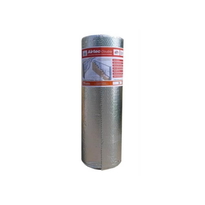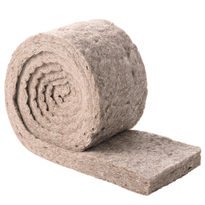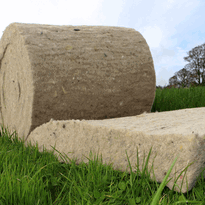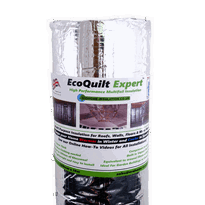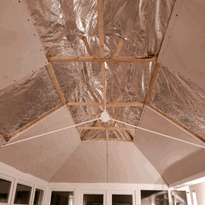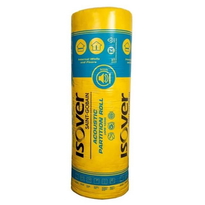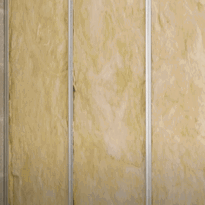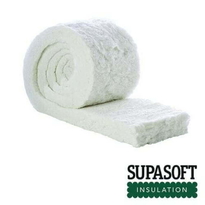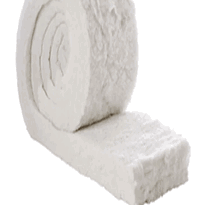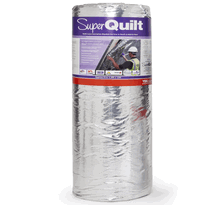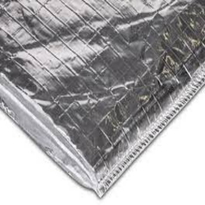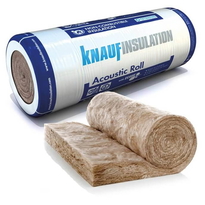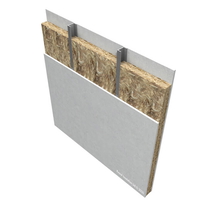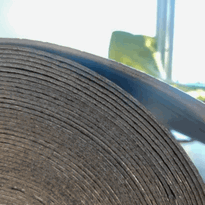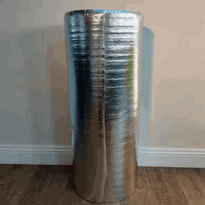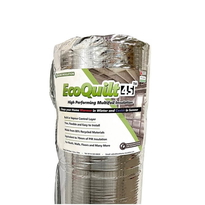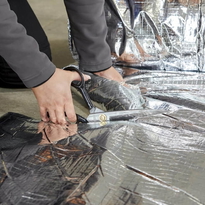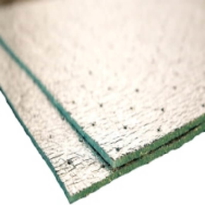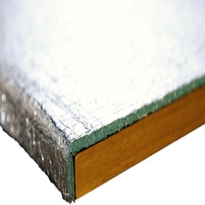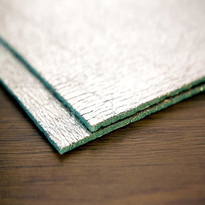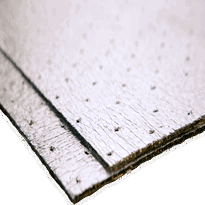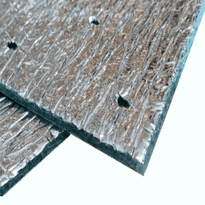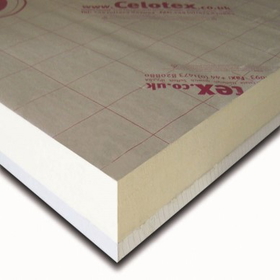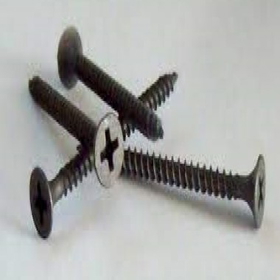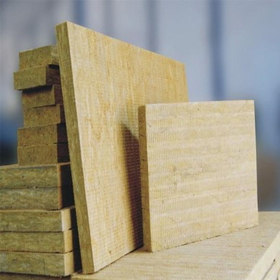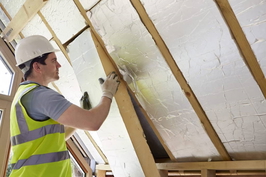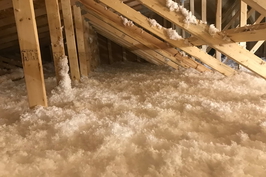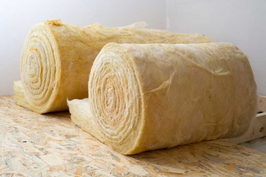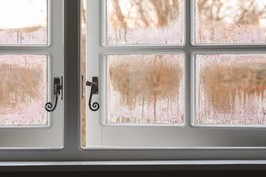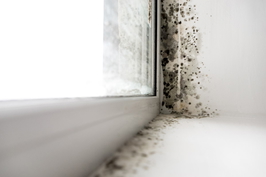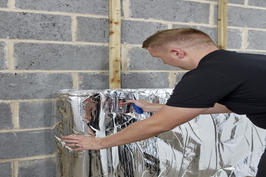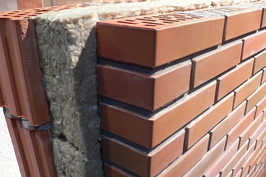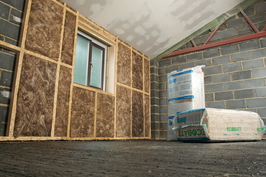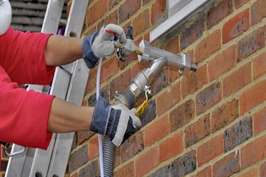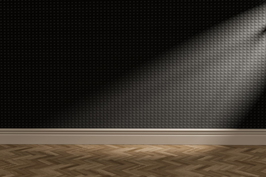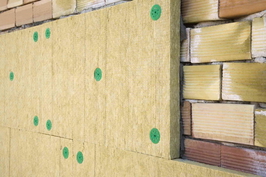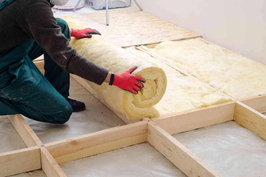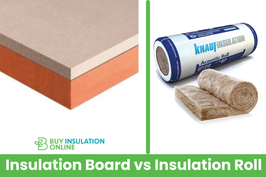Similar Categories
Wall Insulation on a Roll: A Guide to Save Energy and Money
If you are looking for a way to improve the energy efficiency and comfort of your home, you might want to consider installing wall insulation on a roll.
Wall insulation on a roll is a type of blanket insulation that can be cut to fit different parts of the building structure, such as floors, walls, lofts and roofs.
They are made from materials like glass mineral wool, mineral rock wool, sheep’s wool or fibreglass. They are designed to reduce heating bills, boost indoor comfort, control temperatures, and acoustics and lower energy costs. They may have different facing materials, thicknesses, R-values and widths.
In this article, we will explain what wall insulation on a roll is, how it works, what are its benefits, how to choose the right one for your needs, and how to install it properly. We will also answer some frequently asked questions about wall insulation on a roll.
By the end of this article, you will have a better understanding of this insulation option and how it can help you save energy and money.
What is Wall Insulation on a Roll and How Does It Work?
Wall insulation on a roll is a form of blanket insulation that comes in long rolls or batts that can be cut to size. Blanket insulation is one of the most common and widely available types of insulation in the market.
It works by trapping air in tiny pockets within the fibrous material, creating a barrier that slows down the heat transfer between the inside and outside of the building.
Wall insulation on a roll can be installed in various places in the building structure, such as between the studs in the wall, under the floorboards, in the attic or roof space, or around pipes and ducts.
It can be used for both new construction and retrofitting existing buildings. It can also be combined with other types of insulation, such as rigid foam boards or spray foam, to achieve higher R-values and better performance.
What are the Benefits of Wall Insulation On a Roll?
Wall insulation on a roll offers several benefits for homeowners and building owners. Some of these benefits are:
- Energy savings: Wall insulation on a roll can help reduce the amount of energy needed to heat or cool the building by preventing heat loss or gain through the walls. According to the US Department of Energy (DOE), adding insulation to an uninsulated or poorly insulated wall can save up to 20% on heating and cooling costs.
- Comfort: Wall insulation on a roll can help maintain a more consistent and comfortable indoor temperature throughout the year by reducing temperature fluctuations caused by external weather conditions. It can also help prevent cold spots or drafts in the rooms.
- Noise reduction: Wall insulation on a roll can help reduce noise transmission between rooms or from outside sources by absorbing sound waves and dampening vibrations. This can improve the acoustics and privacy of the building.
- Fire resistance: Wall insulation on a roll made from mineral wool or fibreglass is non-combustible and can resist high temperatures without melting or igniting. This can enhance the fire safety of the building and reduce the risk of fire spread.
- Moisture control: Wall insulation on a roll with a proper facing or vapour barrier can help prevent moisture from condensing in the wall cavities and causing mould growth or structural damage. This can improve the indoor air quality and durability of the building.
How to Choose the Right Wall Insulation On a Roll for Your Needs?
 There are several factors to consider when choosing wall insulation on a roll for your needs. Some of these factors are:
There are several factors to consider when choosing wall insulation on a roll for your needs. Some of these factors are:
- R-value: R-value is a measure of how well an insulation material resists heat flow. The higher the R-value, the better the insulation performance. The DOE has created a zone map with corresponding R-values to help homeowners determine minimum insulation values based on their climate and location. You should also check your local building code for specific R-value requirements for your area.
- Thickness: Thickness is related to R-value, as thicker insulation usually has a higher R-value. However, thickness also affects how much space is available for installing the insulation. You should measure the depth of your wall cavities and choose an insulation thickness that fits snugly without compressing or leaving gaps.
- Width: Width is related to how well the insulation fits between the studs in your wall. You should measure the distance between your studs and choose an insulation width that matches or slightly exceeds it. Standard stud spacing is 16 or 24 inches apart, but it may vary depending on your building design.
- Facing: Facing is a layer of material that covers one side of the insulation roll or batt. It serves as a vapour barrier that prevents moisture from migrating into the wall cavities and as a protective layer that prevents the insulation fibres from escaping or being damaged. Facing can be made from kraft paper, foil, plastic, or other materials. You should choose a facing that suits your climate and application. For example, in cold climates, the facing should be installed on the interior side of the wall to keep the moisture inside. In hot and humid climates, the facing should be installed on the exterior side of the wall to keep the moisture outside.
- Material: Material is related to the type of fibre used to make the insulation roll or batt. There are different types of materials available, such as glass mineral wool, mineral rock wool, sheep’s wool, or fibreglass. Each material has its own advantages and disadvantages in terms of thermal performance, fire resistance, sound absorption, environmental impact, cost, and availability. You should compare the features and benefits of each material and choose one that meets your needs and preferences.
Types of Wall Insulation Rolls in Stock
At Buy Insulation Online, we maintain the following inventory:
Foil Insulation rolls:
Multifoil insulation rolls from leading brands like YBS Superquilt and Superfoil help keep your walls warm as they reflect heat indoors. They also help keep a room cool in summer and hence provide year-round comfort.
YBS Superquilt can also be used to insulate cavity walls. These foil insulation rolls can be used to insulate walls internally and externally.
Actis Insulation also makes multifoil insulation rolls like Actis Boost’R and Actis H Control hybris that can be used for internal wall insulation.
Additionally, foil insulation rolls help hit the target U-values easily. They work differently compared to traditional mineral wool insulation. They are easy-to-install, lightweight wall insulation rolls that actually work out to be cheaper when compared to the installation charges and material cost for wool insulation.
Fibreglass Insulation Rolls:
Fibreglass insulation rolls are made of fibreglass or glass mineral wool. They are traditional insulation rolls that give good thermal insulation to walls. They are generally used for internal wall insulation.
Cavity batts used to insulate cavities like Dritherm 37 or Dritherm 32 are also made of fibreglass, though they are manufactured as batts and not rolls.
Here at Buy Insulation Online, we stock fibreglass wall insulation rolls from leading brands like Knauf, Superglass and Isover. We stock party wall insulation rolls that give superior insulation to party walls and help meet building regulations.
In addition, acoustic insulation rolls like Knauf acoustic rolls and Superglass acoustic rolls can be used to insulate stud walls. They not only insulate them but also give superior sound insulation, thus keeping your noisy neighbours out! Loft insulation rolls can also be used for stud-wall insulation since they are basically made of the same material.
Breathable Membranes:
To avoid condensation and prevent water ingress into a building, breathable membranes are used. At Buy Insulation Online, we stock breathable membranes from Superfoil called SF19BB that can be used to restrict moisture ingress on walls.
What's the cheapest way to insulate walls?
Installing wall insulation rolls might be the cheapest way to insulate walls. Fibreglass insulation rolls are definitely cheaper and give almost the same thermal insulation as that on mineral wool batts.
Which is better to insulate walls - rolls or insulation boards?
Insulation boards offer far superior thermal insulation when compared to insulation rolls. However, they can be costlier and difficult to install, especially in hard-to-reach areas. It all depends on your budget and the building regulations in your area.
Which is better for walls- Batt insulation or Insulation rolls?
Insulation rolls are definitely cheaper compared to insulation batts however, batts are made of mineral wool and have slightly better K-Values and soundproofing properties compared to fibreglass insulation rolls.
Alternatively, foil insulation rolls though costlier compared to insulation batts, have better R-values and give better insulation. However, batt insulation (Class A1) has better fire resistance compared to foil insulation rolls (Class E).
There are several types of insulation that come in rolls -
Fibreglass insulation rolls
This is one of the most common types of insulation and is made from fibres of glass. It is typically sold in rolls or batts and is used to insulate lofts, walls, and floors. Fibreglass is also used as Acoustic Partition Roll which is great for reducing sound transmission.
Cellulose insulation
This type of insulation is made from recycled paper products and is treated with fire retardants. It is often sold in rolls or loose-fill form and is used to insulate attics, walls, and floors.
Multifoil insulation rolls
This type of insulation is made from a variety of materials, including aluminium foil and polyethylene, and is designed to reflect heat. It is typically sold in rolls and is used to insulate attics, walls, and floors.
Polyester insulation rolls
This type of insulation is made from recycled plastic bottles and other recycled materials. Made from recycled materials, which makes them an environmentally friendly choice.
Mineral wool insulation rolls
This type of insulation is made from mineral fibres, such as rock or slag wool, and is used to insulate lofts, walls, and floors.
Bubble Wrap Insulation
Bubble wrap insulation is a type of insulation that is made from a layer of small air-filled bubbles that are sandwiched between two layers of plastic. It is important to note that bubble wrap insulation is not as effective at insulating buildings as other types of insulation, such as fibreglass or foam, and may not meet building code requirements in some areas.
Polymeric Acoustic Insulation Rolls
Made from dense rubber and mineral wool insulation sewn together, these insulation rolls are great for reducing sound.
How to Install Wall Insulation on a Roll Properly?
Installing wall insulation on a roll is a relatively easy and straightforward process that can be done by yourself or with the help of a professional.
However, there are some important steps and precautions to follow to ensure a successful and safe installation. Here are some general guidelines for installing wall insulation on a roll:
- Prepare the tools and materials: You will need some basic tools and materials to install wall insulation on a roll, such as a utility knife, a tape measure, a stapler or nails, scissors, gloves, goggles, and a dust mask. You will also need the insulation rolls or batts of your choice, as well as any accessories such as vapour barriers, sealants, or fasteners.
- Prepare the work area: You should clear the work area of any furniture, appliances, or other obstacles that may interfere with the installation. You should also turn off any electrical power or gas supply to the area to avoid any hazards. You should also cover any openings such as windows, doors, vents, or outlets with plastic sheeting or cardboard to prevent dust or debris from entering or escaping.
- Measure and cut the insulation: You should measure the length and width of each wall section that you want to insulate and mark them on the insulation roll or batt. You should then use a utility knife to cut the insulation along the marks. You should cut slightly larger than the actual size to allow for some overlap and adjustment.
- Fit and secure the insulation: You should start from one corner of the wall and fit the insulation between the studs. You should make sure that the insulation fits snugly without any gaps or compression. You should also make sure that the facing is oriented correctly according to your climate and application. You should then use a stapler or nails to secure the edges of the insulation to the studs. You should repeat this process for each wall section until you cover the entire wall.
- Trim and seal any openings: You should use scissors to trim any excess insulation around any openings such as windows, doors, vents, or outlets. You should then use sealant or caulk to seal any cracks or gaps around these openings to prevent air leakage.
- Clean up and dispose of any waste: You should use a vacuum cleaner or a broom to clean up any dust or debris that may have accumulated during the installation. You should also dispose of any waste materials such as cut-offs or packaging in an appropriate manner according to your local regulations.
Conclusion
Wall insulation on a roll is a great way to save energy and money by improving the thermal performance and comfort of your home. In this article, we have explained what wall insulation on a roll is, how it works, what are its benefits, how to choose the right one for your needs, and how to install it properly.
We have also answered some frequently asked questions about wall insulation on a roll. We hope that this article has been helpful and informative for you. If you have any questions or comments, please feel free to contact us.
Frequently Asked Questions
How much does wall insulation on a roll cost?
The cost of wall insulation on a roll depends on several factors, such as the type of material, the R-value, the thickness, the width, the facing, and the quantity.
According to one research, the average cost of blanket insulation ranges from $0.30 to $1.50 per square foot. However, this does not include labour costs or other expenses such as delivery fees or taxes.
How long does wall insulation on a roll last?
The lifespan of wall insulation on a roll depends on several factors, such as the quality of installation, maintenance, exposure to moisture or pests, and wear and tear.
Generally speaking, blanket insulation can last for 20 years or more if properly installed and maintained. However, you should inspect your insulation regularly for any signs of damage or deterioration and replace it if necessary.
Is wall insulation on a roll safe?
Wall insulation on a roll is generally safe if properly installed and handled. However, some types of materials such as fibreglass may contain small fibres that can irritate your skin, eyes, nose, throat, or lungs if inhaled or touched.
Therefore, you should wear protective gear such as gloves, goggles, and a dust mask when working with these materials. You should also avoid contact with electrical wires or other sources of heat when installing these materials.
Q: What is wall insulation on a roll?
A: Wall insulation on a roll refers to a type of insulation material that comes in the form of rolls. It is designed to be easily installed by unrolling it and fixing it to the walls, providing efficient thermal and acoustic insulation.
Q: How does wall insulation on a roll work?
A: Wall insulation on a roll works by creating a barrier that helps to retain heat or coolness inside a building. It prevents the transfer of heat through the walls, thus reducing the need for heating or cooling systems and ultimately saving energy.
Q: What are the benefits of using wall insulation on a roll?
A: Using wall insulation on a roll offers several benefits, including reduced energy bills, improved thermal comfort, increased energy efficiency, reduced carbon footprint, and enhanced soundproofing.
Q: How is wall insulation on a roll installed?
A: Wall insulation on a roll is usually installed by unrolling it and fixing it directly onto the internal walls. It can be easily cut to size and is often secured using adhesives or mechanical fixings.
Q: What types of insulation materials are commonly used in wall insulation on a roll?
A: Wall insulation on a roll can be made from various materials such as mineral wool, fibreglass, cellulose, or foam insulation. Each material has its own unique properties and strengths.
Q: Is wall insulation on a roll suitable for all types of walls?
A: Wall insulation on a roll is most commonly used for internal walls, but it can also be used for external wall insulation in some cases. It is not suitable for cavity walls or solid walls without proper insulation.
Q: Can wall insulation on a roll be used for loft insulation?
A: While wall insulation on a roll is primarily designed for insulating walls, it can also be used for loft insulation. However, it is important to ensure the material meets the required insulation standards for loft spaces.
Q: How does wall insulation on a roll help to save energy and money?
A: Wall insulation on a roll helps to save energy and money by reducing heat loss through the walls. This means that less energy is needed to heat or cool the building, resulting in lower energy bills and long-term cost savings.
Q: Can wall insulation on a roll be used for acoustic insulation?
A: Yes, wall insulation on a roll can provide effective soundproofing and acoustic insulation. It helps to reduce the transmission of sound between rooms, creating a more peaceful and comfortable living or working environment.
Q: Is professional installation required for wall insulation on a roll?
A: Professional installation is not always required for wall insulation on a roll, as it can be a DIY-friendly option. However, if you are unsure about the installation process or if you have specific requirements, it is recommended to consult a professional installer.

